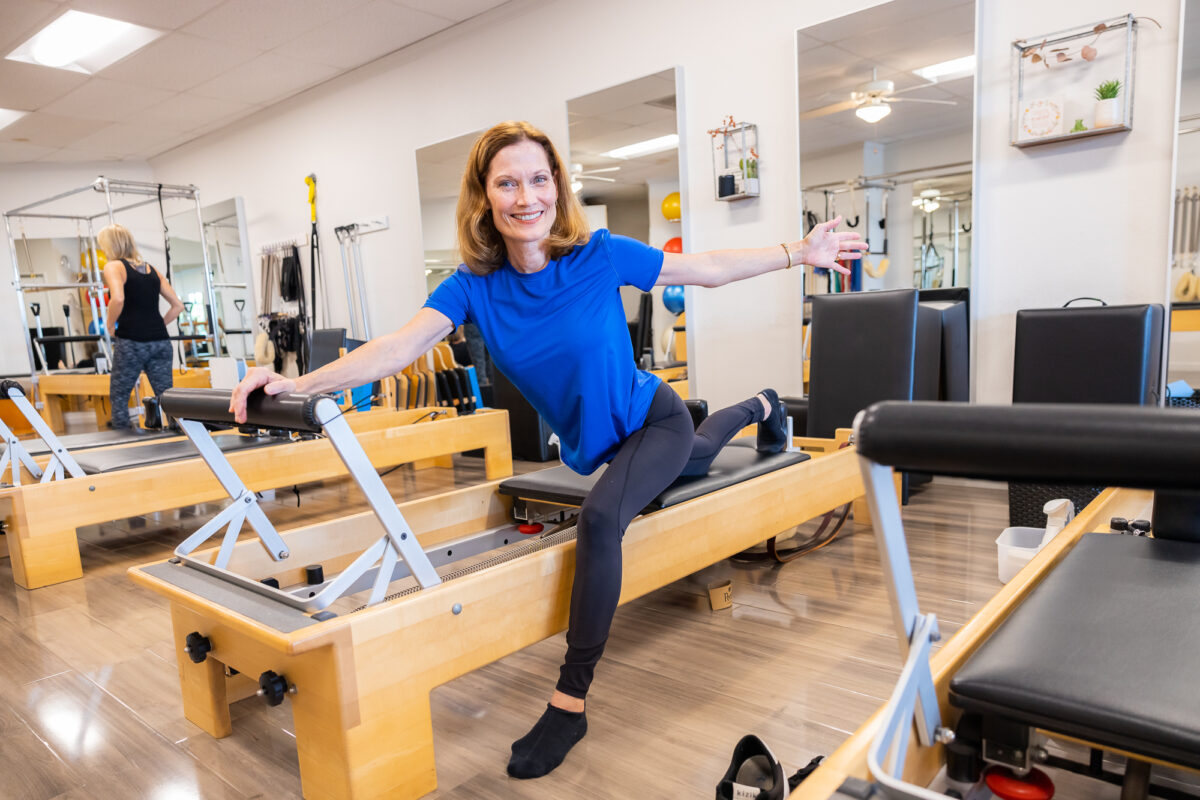The Reformer is a classic Pilates equipment machine that encapsulates the origins of Pilates. Originally developed as “Contrology” by Joseph Pilates in the early 20th century, the Reformer machine was the heart of the early Pilates movement. Reformer Pilates was originally used to strengthen an individual and get them to a level to which they can do Pilates mat work exercises effectively. Now, there are many approaches to Reformer Pilates including use for cross-training and rehabilitation, as well as authentic Reformer classes that allow a more intense and dynamic Pilates experience.
At Sheppard Methos Pilates in Westwood, we offer Pilates Reformer classes for any reason to improve your muscle tone, flexibility, and range of motion.
Excited to learn more about how you can join the Pilates community? Contact Sheppard Method Pilates in Westwood. Contact our office to get started!
What Is a Pilates Reformer?
If you have gone to a Pilates studio before, chances are you’ve seen a wild-looking contraption: the Reformer. This machine has a bed-like frame with a flat platform—the carriage—which rolls back and forth on wheels within the frame. The carriage is attached to one end of the reformer by a set of springs, which provide different levels of resistance as the carriage is pushed or pulled along the frame with the use of shoulder blocks. At the spring end of the reformer, there is an adjustable foot bar, which can be used by the feet or hands as the carriage is moved. Attached to the top end of the frame, there are long straps with handles on them that can be pulled with legs or arms to move the carriage.
Body weight and resistance from the springs are what create time under tension when moving the carriage. As you become stronger and more skilled, the Reformer evolves with you to continue providing an optimal challenge. Because the Reformer is so adjustable and versatile, it is ideal for differing body sizes, abilities, and levels of skill.
The Development of the Pilates Reformer in WWI
The Pilates Reformer is a machine developed by Joseph Pilates in 1946 when Pilates was interned on the British Isle of Man during WWI. In his cell, stretching and exercising daily to maintain health and mobility, was where the idea of Pilates was born. However, it was not until later outside of the cellblock that Joseph Pilates developed the Reformer machine—using hospital beds.
With the use of straps and the bedframe of hospital beds, Pilates worked on fellow inmates as a nurse in the internment hospital, helping to stretch and strengthen their limbs, which were atrophied and malnourished from imprisonment. Incorporating his knowledge of yoga and Zen meditation and breathing, Pilates married the stretch-and-strengthen technique with breathing exercises. As a result, the men gained strength and mobility in their bodies.
After WWI ended, Pilates continued to develop his Reformer machine based on what he learned in the hospital during internment. Rudimentary Reformer machines were like sliding beds, using straps and springs as resistance. In 1923, Joseph Pilates opened his first Pilates studio in New York City, with a refined Reformer machine ready to take the world by storm.
The Reformer Machine in Modern Pilates
While the Reformer is, in fact, traditional Pilates equipment, it is in no way outdated. If anything, the longevity of the Reformer’s use and benefits is a testament to Pilates as a whole. In the modern age, we are plagued with physical ailments stemming from long hours at a desk and looking at digital devices—both of which wreak havoc on our posture and alignment. Reformer Pilates can help restore balance and alignment with the assistance of straps to achieve full-body mobility which can be challenging to execute effectively on the mat.
While Reformer Pilates is neither “easier” nor more difficult, it offers stability and range of motion that many people may need, whether to offset poor work/technology posture, to rehabilitate injury, or to get them started with Pilates altogether. Mat Pilates focuses on the core; Reformer Pilates is more versatile, promoting length, strength, flexibility, and balance.
Specific benefits of Reformer Pilates include:
- Targeting of flexibility and strength
- Access to a variety of muscles, including the Pilates Powerhouse muscles
- Offers resistance and time under tension to build more strength
- The versatility of movements and use for a variety of body types and abilities
- Challenges to balance and stability
- Offers a full range of motion to complete movements
Sheppard Method Pilates Reformer Classes
At Sheppard Method Pilates, we love the Reformer! Authentic Pilates Reformer classes capture the ethos of the Sheppard Method Studio of embracing the whole body and person at whatever physical capability or need. If you are in physical therapy, an active athlete, totally new to exercise, recovering postpartum—or even a seasoned Pilates pro, the Reformer offers something special. Come try out Reformer Pilates at Sheppard Method in Westwood!
Call the Westwood Pilates instructors at Sheppard Method Pilates to discuss how we can help you include Reformer Pilates in your exercise regimen and boost your overall health.

